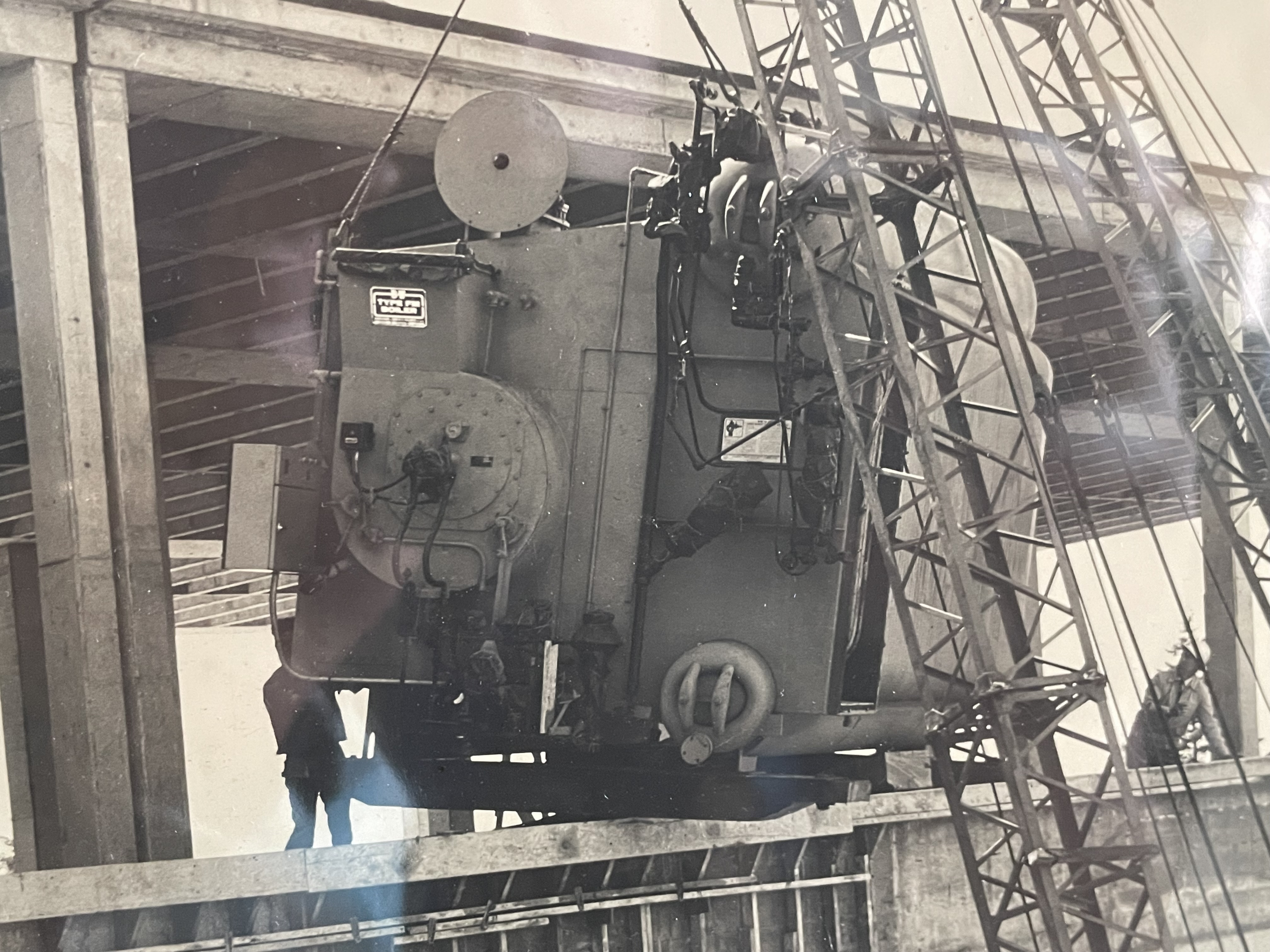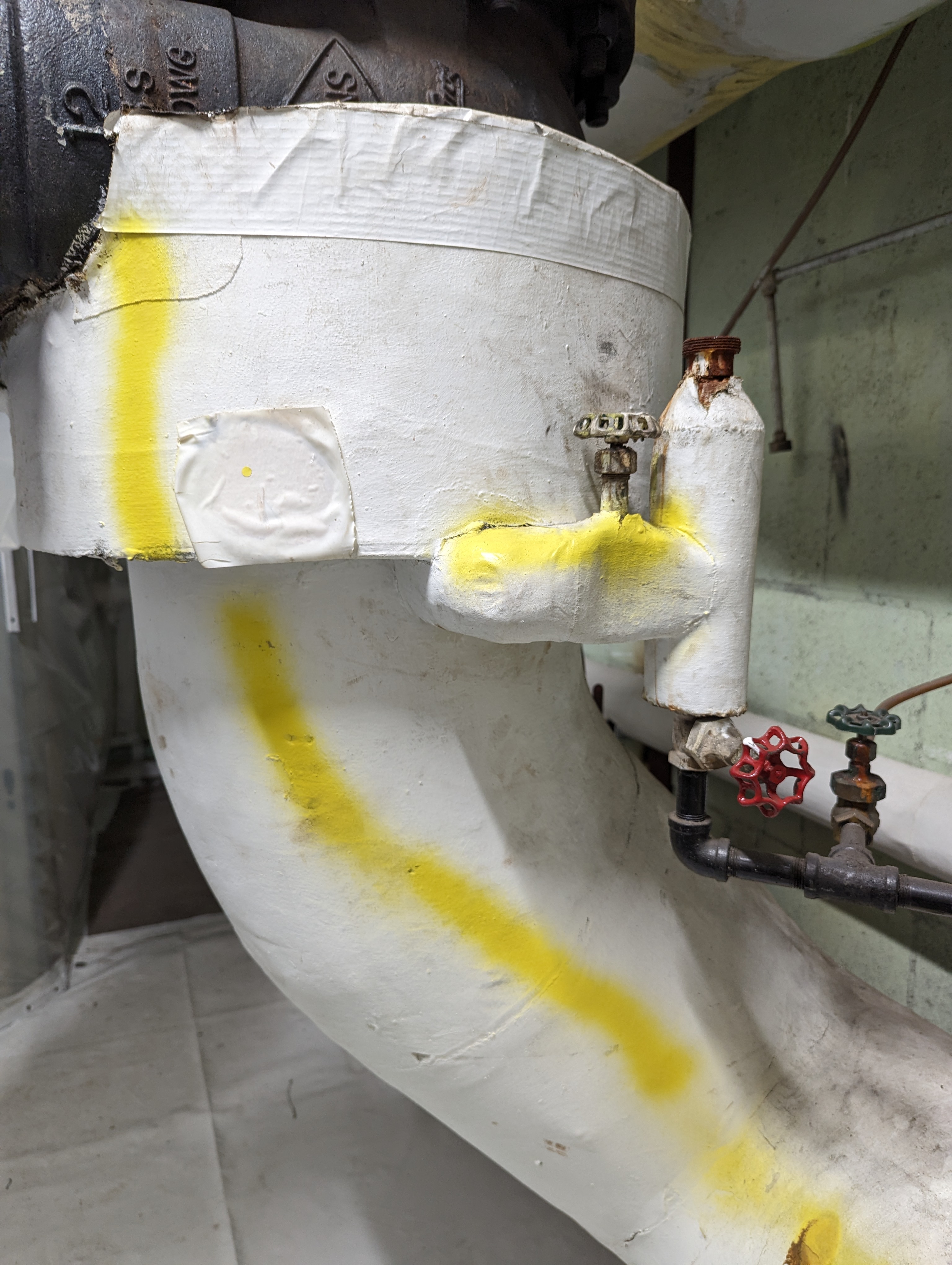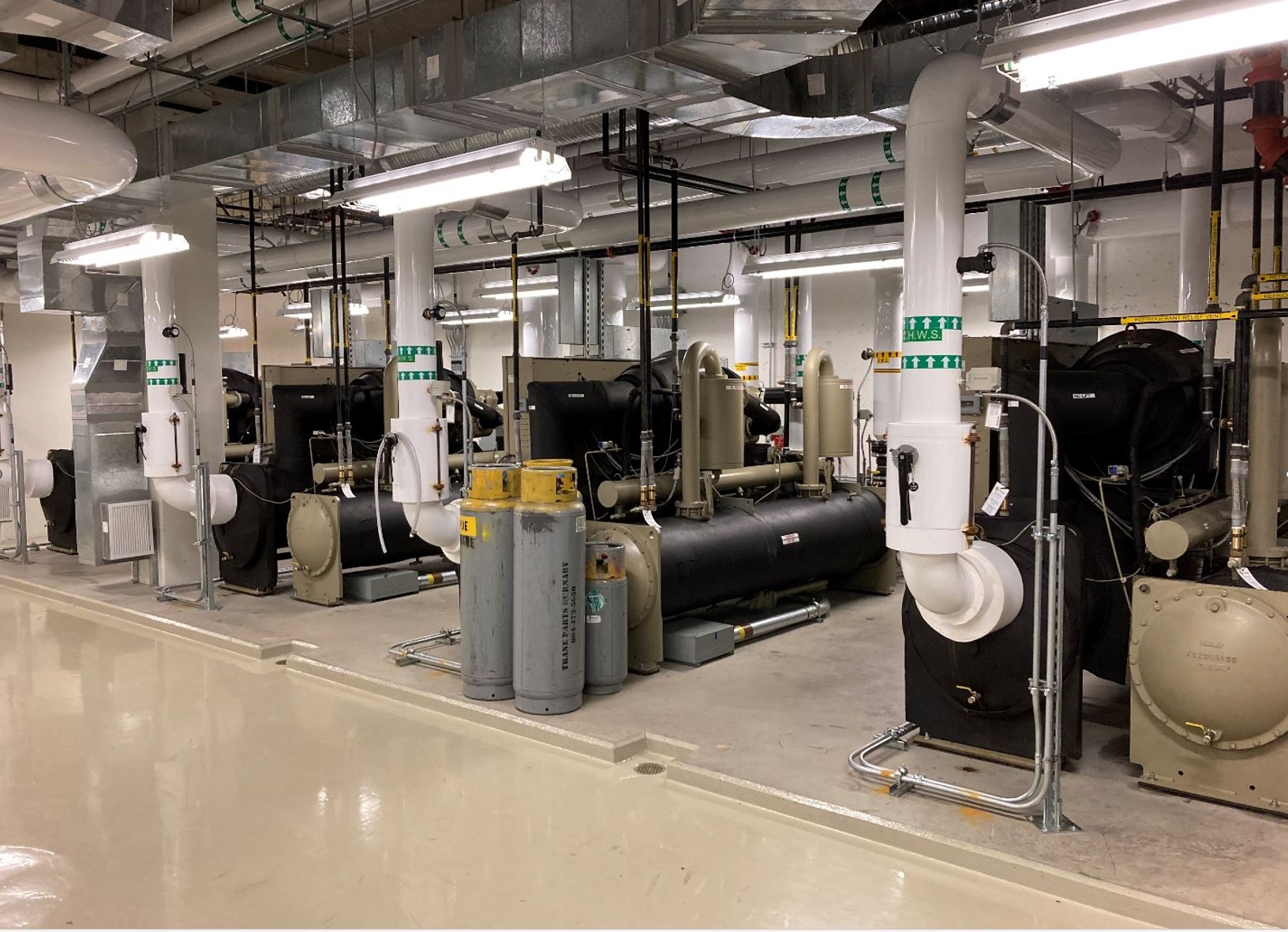How do you safely remove three end-of-life boilers, constituting almost 65 tonnes of steel and asbestos, from the third storey of a hospital that has grown around them in the six decades since the boilers were installed and reduce emissions by 20-25%?
That was the question challenging the Island Health Facilities Design & Construction (FDC) team at Nanaimo Regional General Hospital (NRGH) as they made plans to remove the now unused boilers and remediate the site for future uses, all without impacting patient care at the busy hospital.
What goes up…
Crews used a crane to install the original boilers at NRGH in the early 1960s.
Back in the 1960’s, installing the boilers was relatively simple. “They just craned them up and then rolled them into their current location since it was just basically from the edge of the building,” explained Alexzander Grubac, NRGH’s Chief Engineer with Facilities, Maintenance and Operations (FMO).
In with the new
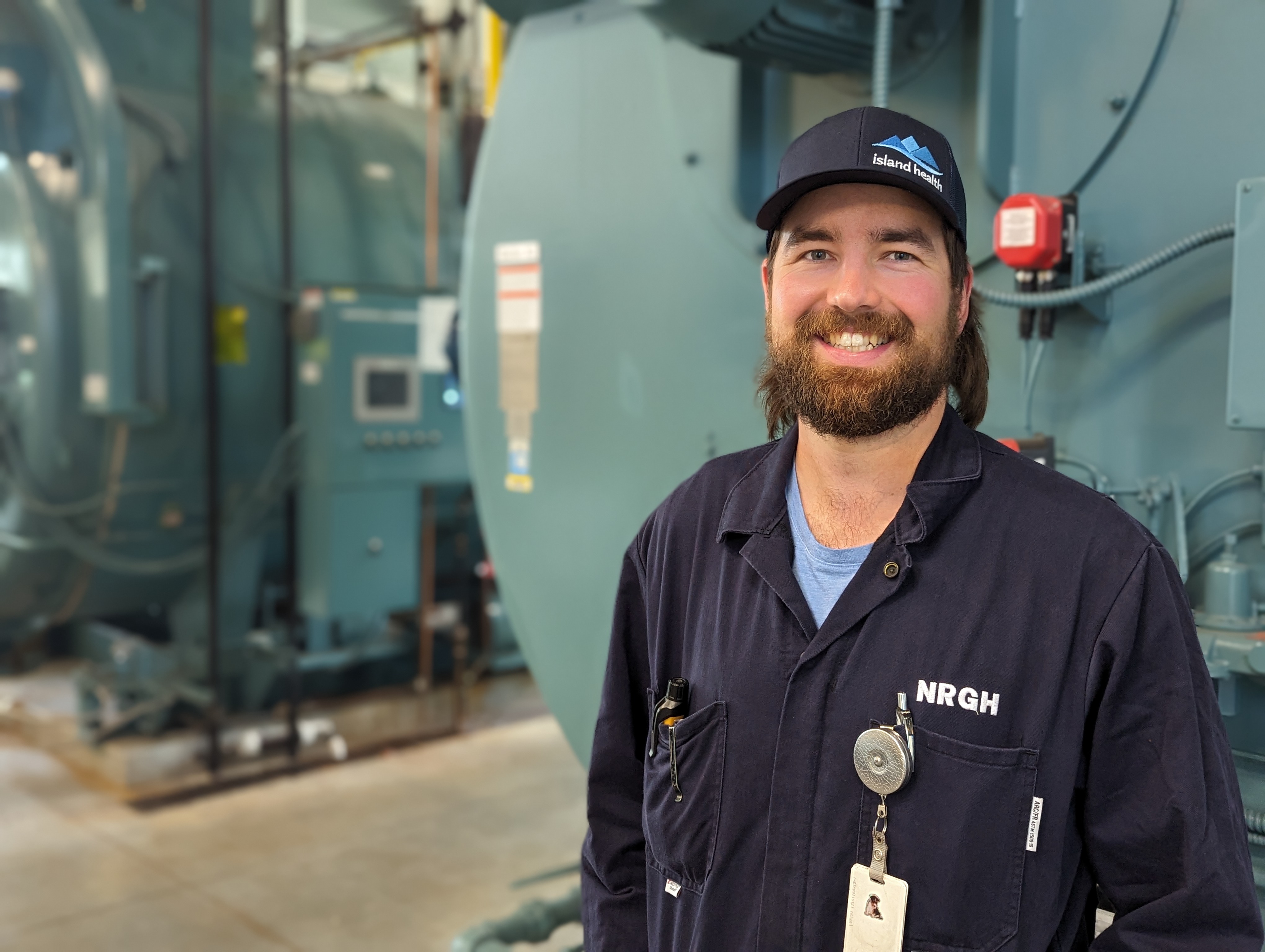
Alexzander Grubac, NRGH’s Chief Engineer, stands in front of a boiler in the new Thermal Energy Centre
Fast forward to 2016. The boilers were now sandwiched between six supply and exhaust fans and the hospital’s footprint had grown significantly around the boiler room — crane-accessible vertical drops were a thing of the past. Although the time had come to replace them, because the boilers perform critical functions such as heating the hospital and creating steam that sterilizes surgical equipment and other crucial medical supplies, the old boilers couldn’t be removed until a new thermal energy centre was up and running.
In 2016, in alignment with Island Health’s commitment to Sustainability through System Redesign and Innovation, planning for a new Thermal Energy Centre (TEC) officially got underway and in 2018, ground was broken on the $22 million project. Three years later, the stand-alone thermal energy centre was built and after rigorous testing to ensure the new boilers were functioning properly, on September 26, 2021, the hospital switched over to run completely on its new boilers.
Out with the old
Removal of the old boilers and remediation planning started in January 2023. “We looked extensively at removal options,” said Bryan Quaife, FDC Project Manager at NRGH. “We considered whether a crane could reach the new building edge somehow. Could we move parts over to another location for the crane? We talked about cutting an opening in two walls — like major infrastructure moves to pull it out and to get a crane here. It just wasn't feasible.”
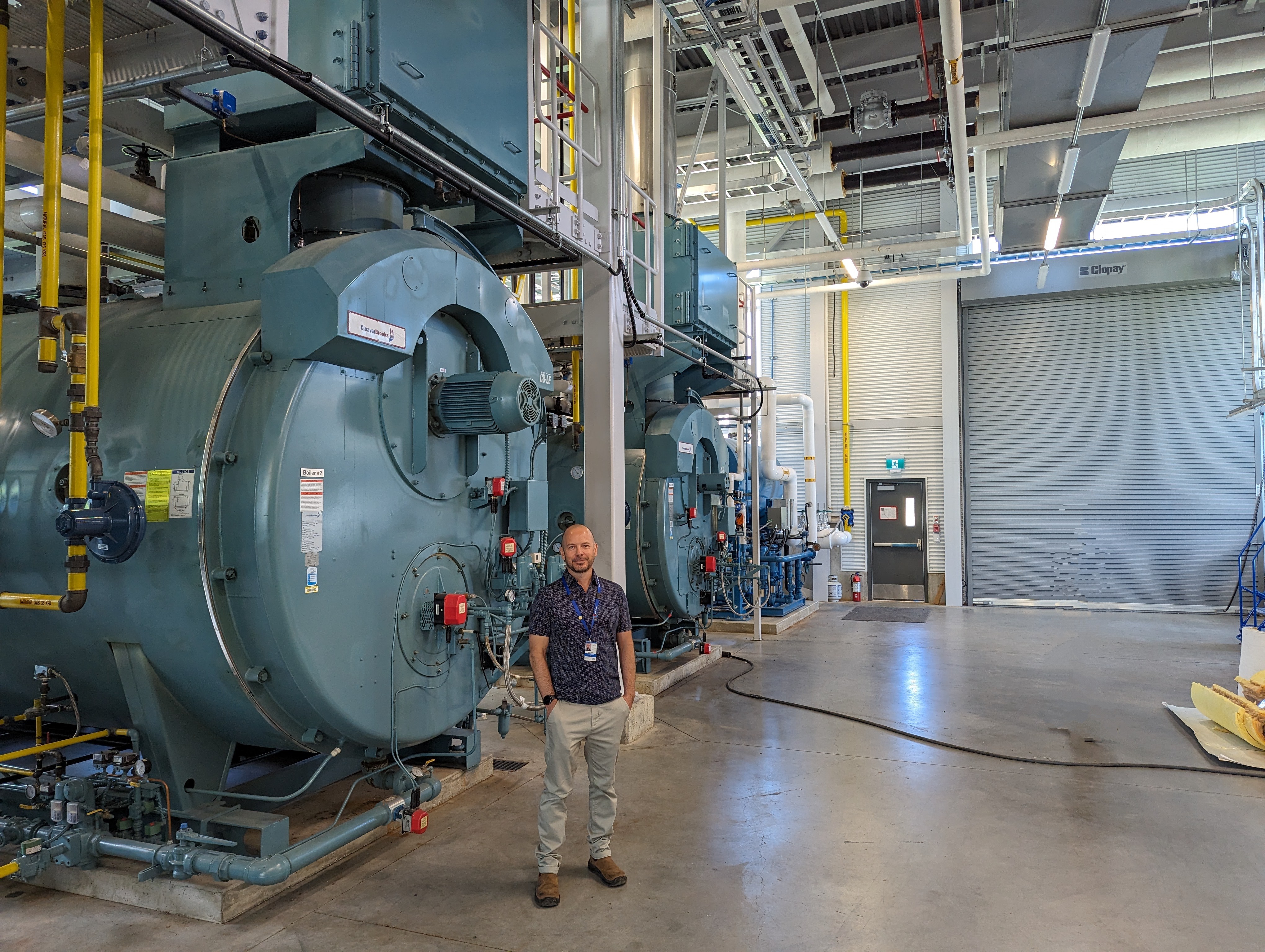
Bryan Quaife, Project Manager with FDC, during a tour of the new TEC at NRGH
Quaife and Grubac explained that the only viable option was to cut the boilers up into 100-pound pieces, clean them, load them all on covered carts, and run them down the public elevators at night. The workers first had to set up a complete containment zone so they could safely work to remove the asbestos. Then, they had to deskin the boilers, which meant lying on their backs with only a foot or two of clearance to remove all the asbestos containing materials.
“Then they were just left with the boilers, which consisted of the steel tubes and the big steam and mud drums that are almost an inch thick,” Grubac recalled. “From that point they were in there with oxy-propane torches, torching everything into manageable pieces between 50 and 100 pounds.”
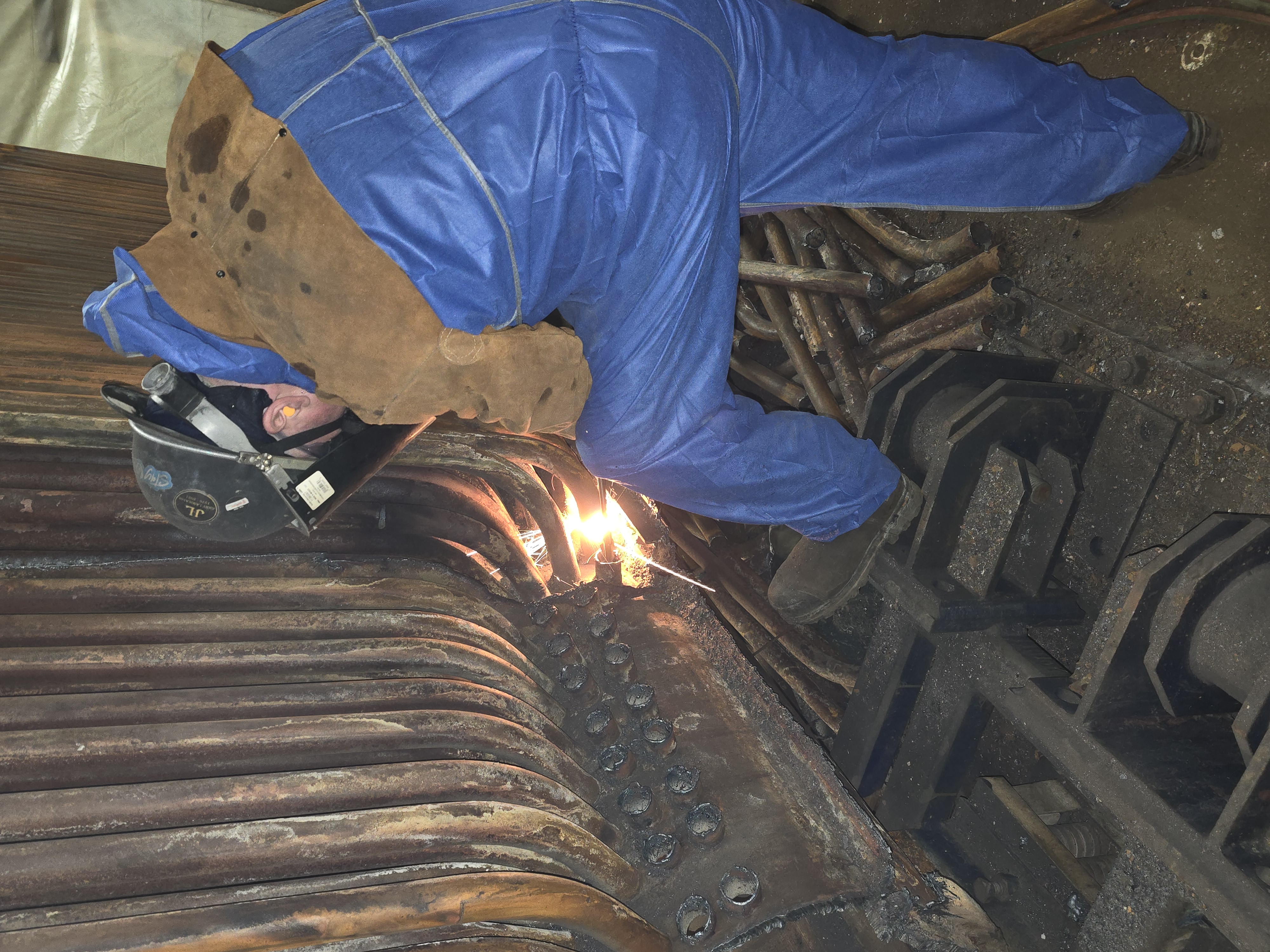
The boilers had to be cut with oxy-propane torches into manageable chunks and then carted down the public elevator at night.
Between December 2023 and June 2024, the crews from Kinetic Environmental were able to remove the boilers and asbestos containing materials and clean the space without any risk or impacts to patients, staff or the public.
“With the asbestos all gone, that risk is removed and there's less chance of harm to any of us working up there. I think that's a great win for the site too,” said Grubac.
The yellow paint outlines materials containing asbestos that will be safely removed from the old boiler room.
A cleaner tomorrow
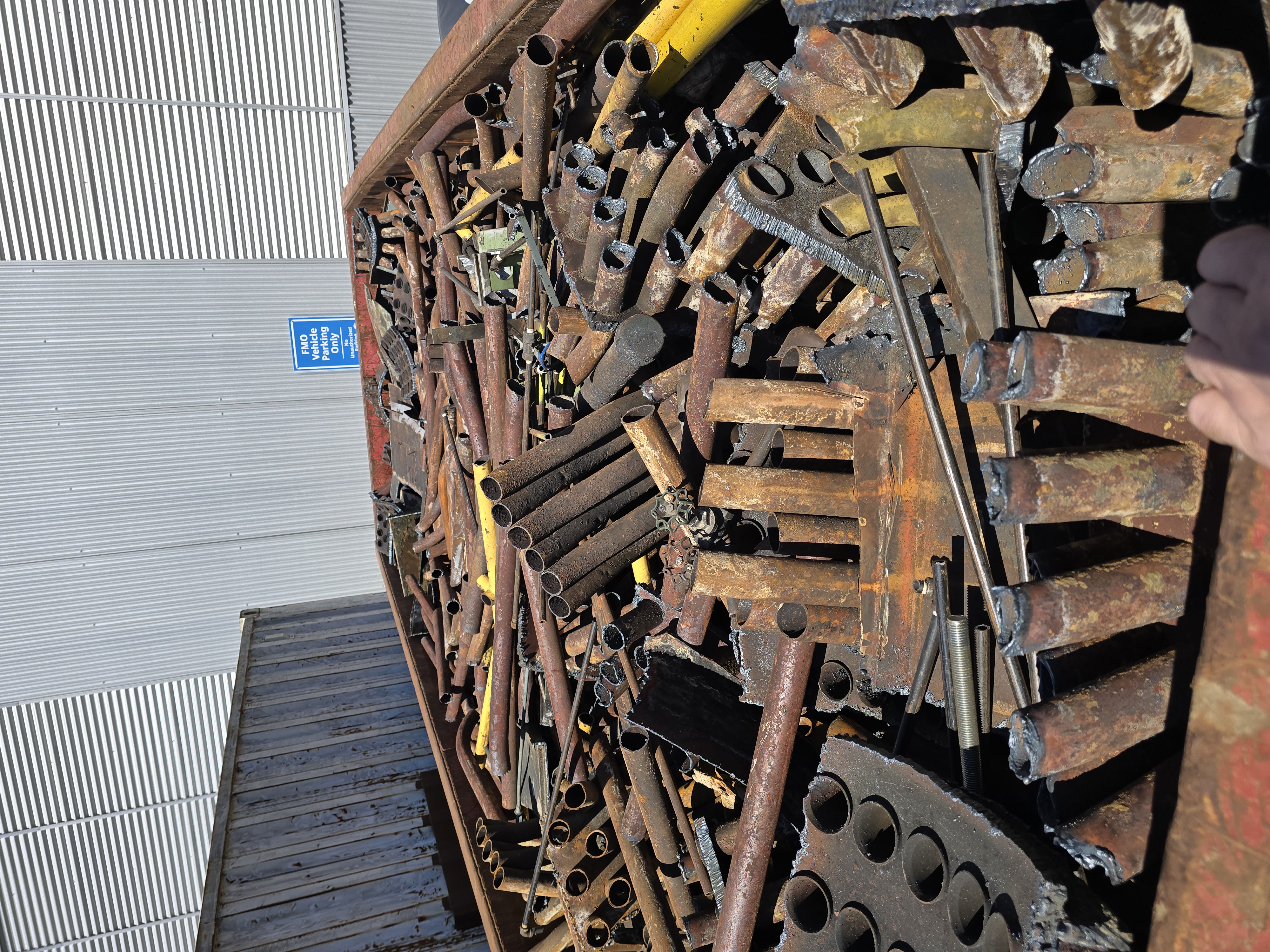
A fully loaded truck sets off to the recycling plant with tons of steel in tow.
While the new thermal energy centre is more efficient than its predecessor, it’s what’s planned for the vacant boiler room that will help Island Health attain its emission reduction goals. Grubac said the plan is to put in four 250-tonne heat recovery chillers as part of the NRGH advanced heat recovery system. “Basically, our new system will use all heat sources and sinks simultaneously, and whatever temperature the system needs, it can just take from the system, and it's produced and used the most efficient way possible,” said Grubac.
Heat recovery chillers in the Campbell River Hospital
According to Ryan Galloway, an Energy Manager with Island Health, those heat recovery chillers are central to Island Health’s strategy for switching over from fossil fuels to electricity. “Essentially, the strategy is similar to using heat pumps for your home,” he said. “They can be used for cooling and heating, and that's the difference between a heat recovery chiller versus a standard chiller.” Over the next few years, the plan is to rely more on heat recovery chillers for both heating and cooling purposes, lessening the hospital’s reliance on fossil-fuel burning boilers.

Ryan Galloway, Island Health Energy Manager, is part of the team working to help Island Health achieve our emissions reduction goals.
The heat recovery chiller will significantly increase the hospital’s cooling capabilities to help the operations respond to increasing future temperatures, while reducing emissions by up to 25%. It’s all part of Island Health’s commitment to a 50% emissions reduction by 2030 and 80% by 2050.

